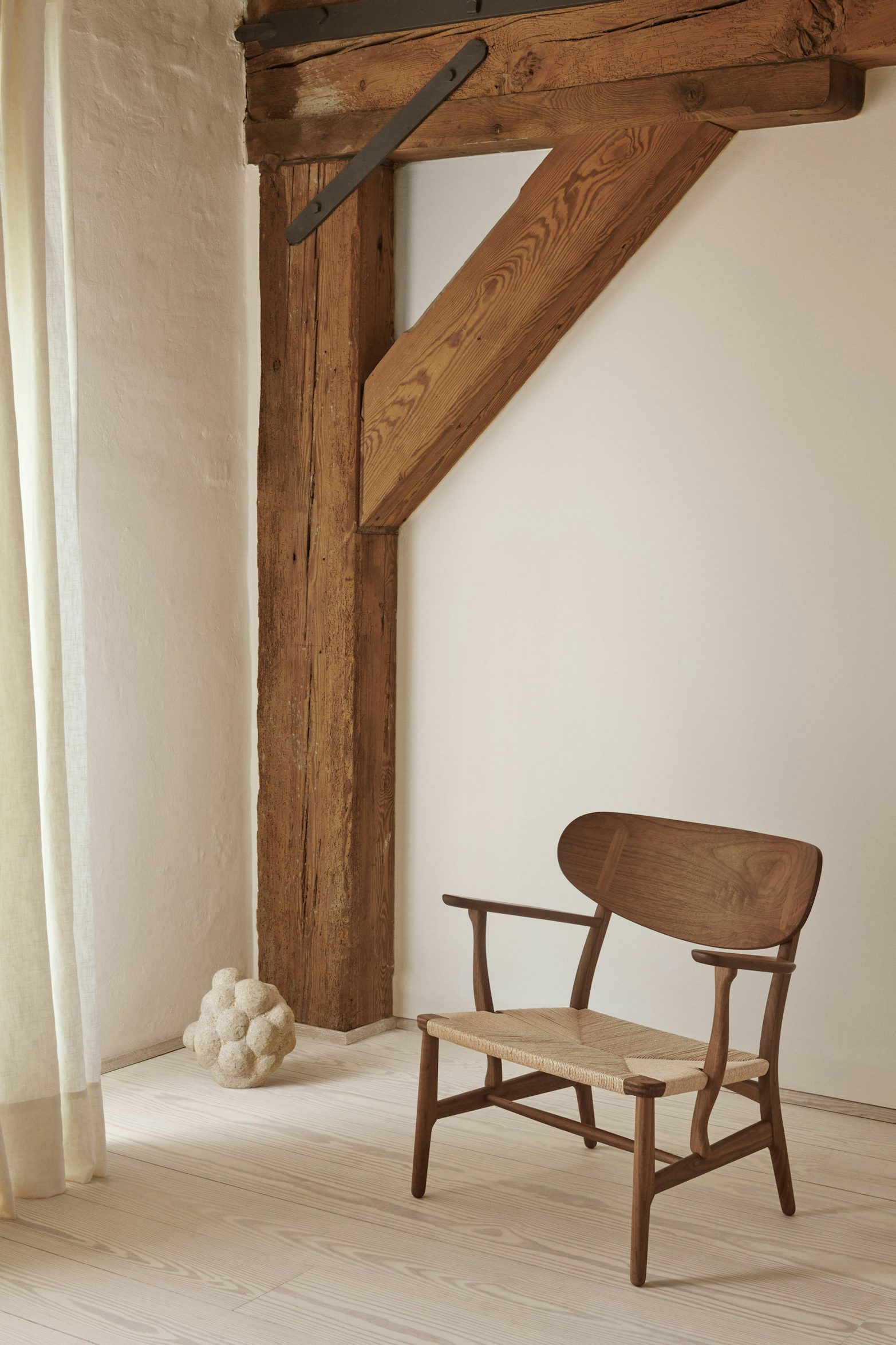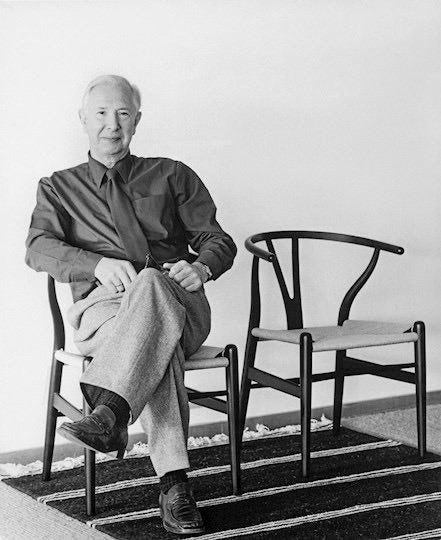Product Gallery
Video
Source: Carl Hansen & Søn
Hans J. Wegner
Denmark (1914–2007)
If Danish modernism is best known and beloved for the use of traditional techniques to emphasize materiality—graceful curves honoring the grain of fine walnut, for example—that’s thanks in large part to Hans J. Wegner. Born in southern Denmark, at 14 Wegner began an apprenticeship with Danish master cabinetmaker H. F. Stahlberg, where he honed a preternatural talent and learned skills he’d bring to bear throughout a career lasting some eighty years and full of design masterpieces.
While studying at the School of Arts and Crafts in Copenhagen, Wegner worked for Arne Jacobsen and Erik Møller on a range of furniture for the Aarhus City Hall. Four years after graduation, he had showcased a chair at the Copenhagen Museum of Art and Industry, and opened his own firm. Sculptural, surprisingly comfortable seating became Wegner’s trademark: for Fritz Hansen, the floating Chinese chairs; for Carl Hansen & Sons, he designed the instant classic Wishbone, Shell, and Elbow chairs; for PP Møbler, the cozy Papa Bear, iconic Round, and buoyant Circle chairs; and countless others, most still in production.
Wegner retired in 1993 and died fourteen years later, but his work lives on in its ubiquity across residential, hospitality, and corporate design—not to mention the Museum Sønderjylland’s permanent exhibition of the three dozen chairs he felt were his very best in a water tour in his hometown of Tønder.
More in Furniture
View All
by Antonio Citterio
for B&B Italia
Frank Ottoman

by Antonio Citterio
for Maxalto
Abseo Table

by Antonio Citterio
for Maxalto
Convivium Storage Unit
More in Hans J. Wegner
View All
by Hans J. Wegner
for Carl Hansen & Søn
CH825 Credenza

by Hans J. Wegner
for Carl Hansen & Søn
CH22 Lounge Chair

by Hans J. Wegner
for Carl Hansen & Søn








